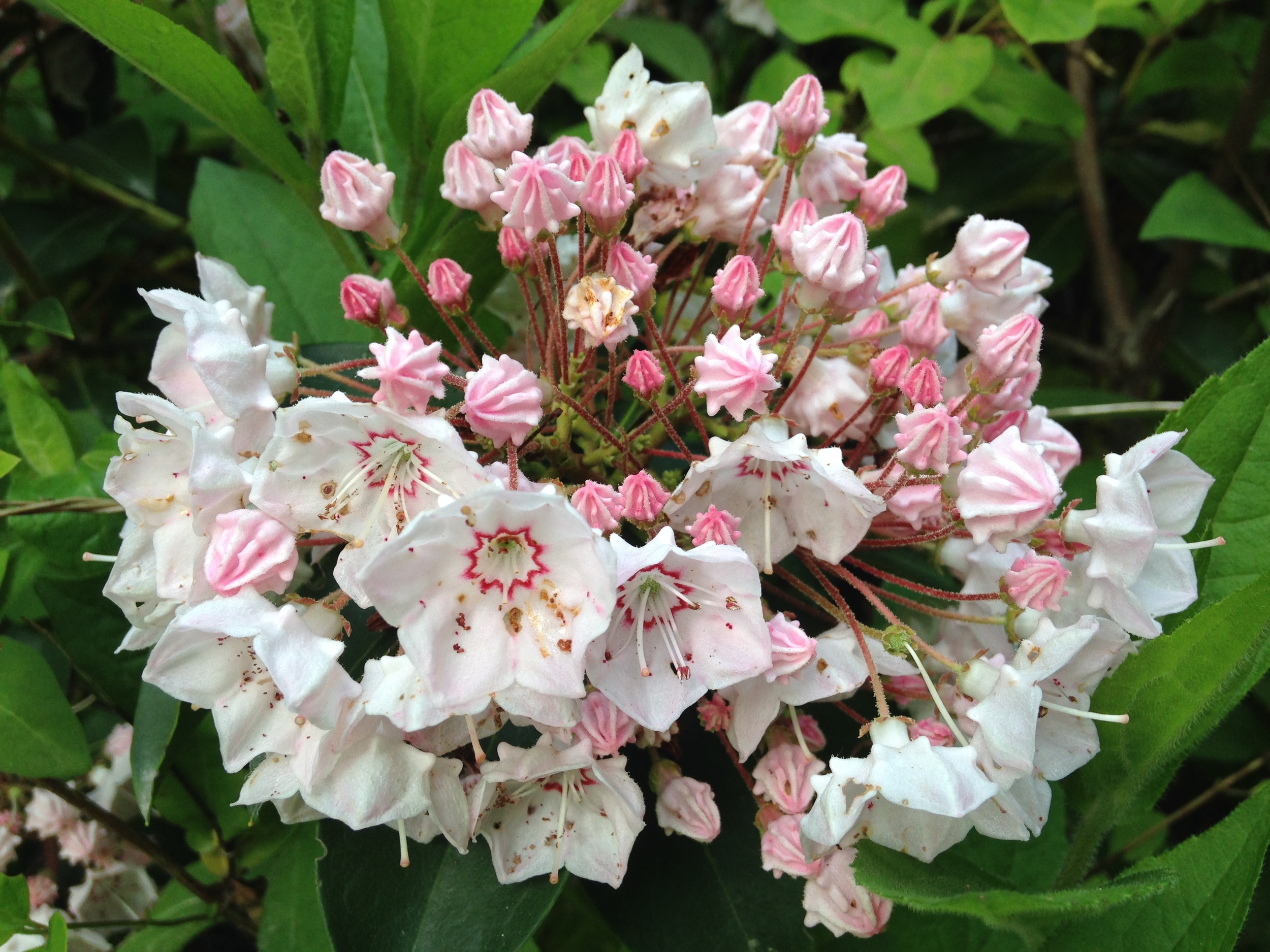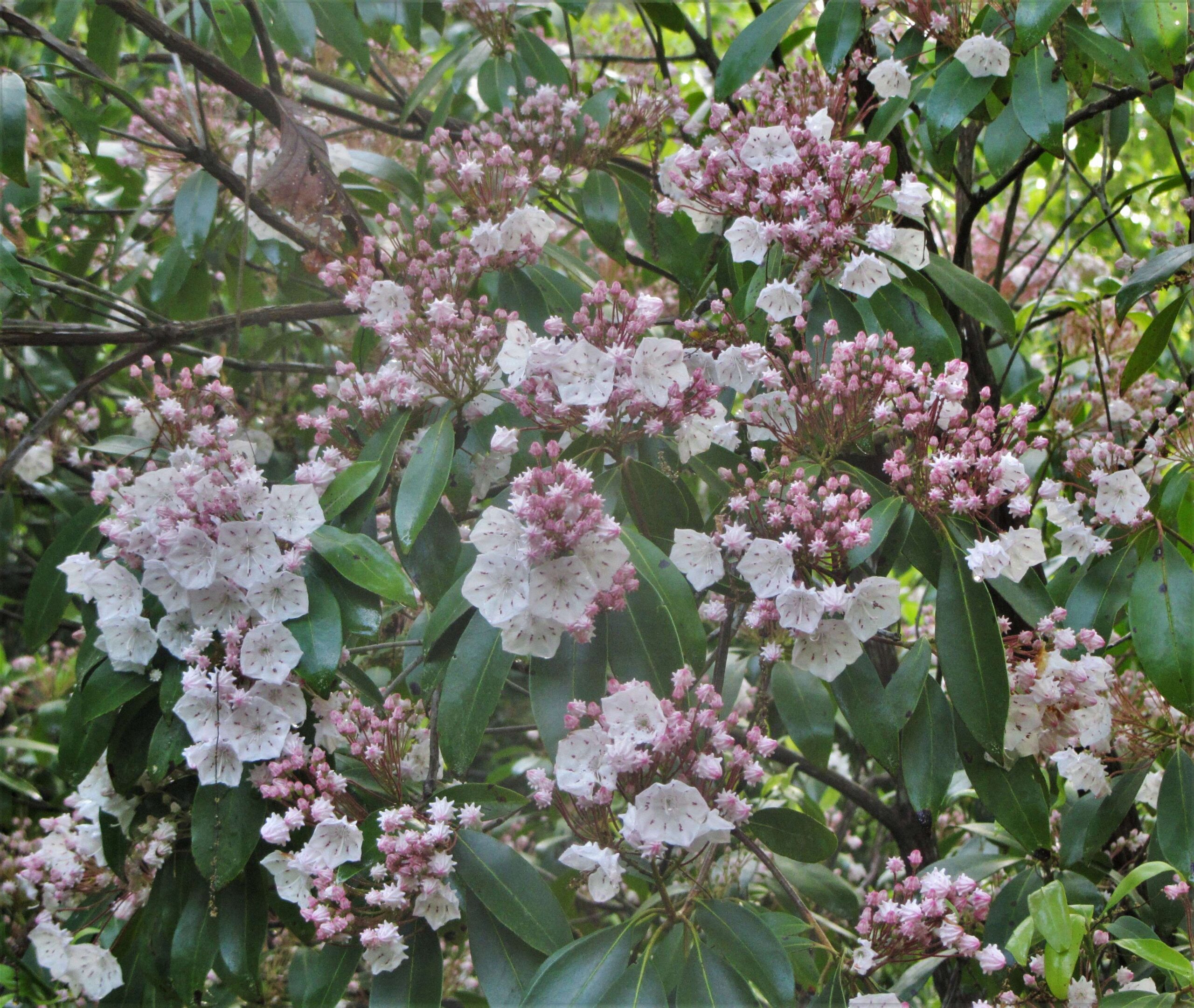Mountain Laurel: The Pink Jewel of the Appalachian Mountains
Mountain laurel (Kalmia latifolia), a stunning evergreen shrub, is a true icon of the Appalachian Mountains. Its vibrant pink flowers, which bloom in profusion in late spring and early summer, create a breathtaking spectacle that has captivated nature lovers for centuries. This article delves into the fascinating world of mountain laurel, exploring its unique characteristics, ecological significance, cultural importance, and potential uses.

Mountain laurel is a broadleaf evergreen shrub that typically grows to a height of 4-6 feet, although it can occasionally reach 10 feet or more. Its leaves are oval-shaped and leathery, often with a dark green upper surface and a paler underside. The most striking feature of mountain laurel is its flowers, which are clustered in terminal inflorescences and are typically pink in color, although they can sometimes be white or even crimson. The flowers are composed of five petals that are fused together at the base, creating a bell-shaped structure.
Mountain laurel plays a vital role in the Appalachian ecosystem. It provides food and shelter for a variety of wildlife, including birds, bees, butterflies, and deer. The nectar from its flowers is a valuable source of food for pollinators, while its leaves and twigs provide cover for many small animals. Mountain laurel also helps to prevent soil erosion on steep slopes, and it can be used to create natural windbreaks.
:max_bytes(150000):strip_icc()/mountain-laurel-plants-growing-tips-2131174-01-f17a96877b3d44a29c0c51152c12560d.jpg)
Mountain laurel has a rich cultural history in the Appalachian region. It has been used by Native Americans for centuries as a medicinal plant, and it is also associated with many folklore and legends. In the 1920s, mountain laurel was officially adopted as the state flower of Pennsylvania, and it is also the state tree of North Carolina. Today, mountain laurel remains a beloved symbol of the Appalachian Mountains and is celebrated in countless songs, poems, and stories.
In addition to its ecological and cultural significance, mountain laurel also has a number of potential uses. Its wood is hard and durable, making it suitable for use in woodworking projects. The plant’s leaves and flowers contain a variety of bioactive compounds that have been shown to have potential medicinal properties. Some studies have suggested that mountain laurel may have anti-inflammatory, antioxidant, and antimicrobial activities.

Despite its many benefits, mountain laurel is facing a number of threats. Habitat loss, pollution, and climate change are all taking a toll on this iconic plant. In addition, mountain laurel is susceptible to a number of diseases and pests, including powdery mildew, leaf spot, and scale insects. Efforts are currently underway to protect mountain laurel and to ensure its survival for future generations.
Mountain laurel is a truly remarkable plant that plays a vital role in the Appalachian ecosystem. Its stunning flowers, unique characteristics, and cultural significance have made it a beloved symbol of the region for centuries. While mountain laurel faces a number of threats, there is hope that conservation efforts will help to ensure its survival for generations to come.
Latin name: Kalmia latifolia
Mountain laurel flowers: [Image of Mountain laurel flowers]

:strip_icc()/Star-Jasmine-Bb09HQPpasXBPjzYMW55cV-cae2b5707aa74a3ba328959ad0357284.jpg?w=200&resize=200,112&ssl=1)




